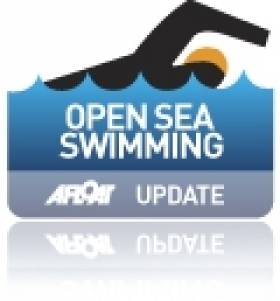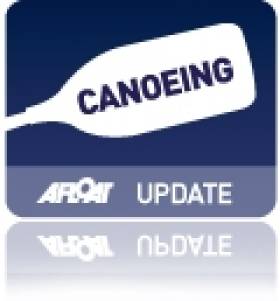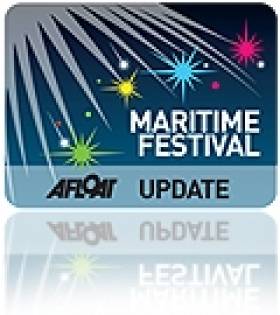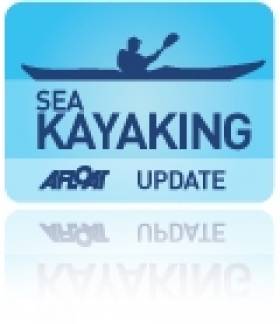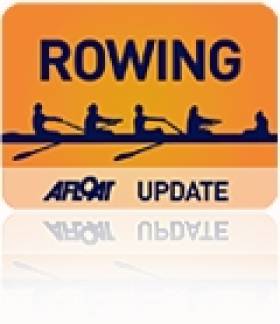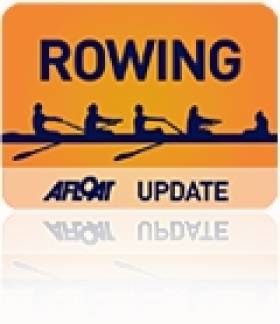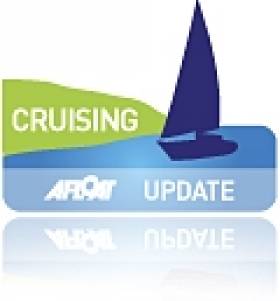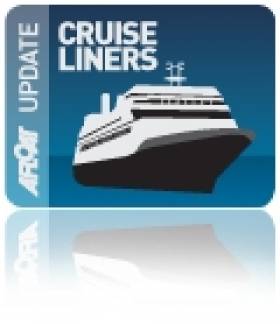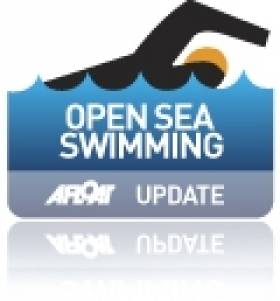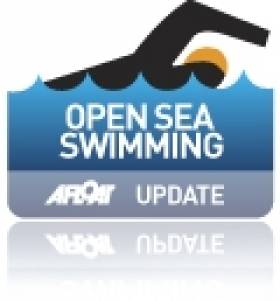Displaying items by tag: liffey
Liffey Swim to Attract Hundreds of Swimmers for Dublin City Festival
#liffeyswim – The Lord Mayor Oisín Quinn will officially start the 94th Liffey Swim, supported by Dublin City Council, this Saturday 24th August as hundreds of brave swimmers take the plunge. This year's race will start at the Loop Line Bridge beside Butt Bridge and finish at the pontoon on the North side of the river beside the East Link Toll Bridge in front of the O2.
The 94th Dublin City Liffey Swim, supported by Dublin City Councilwill start at the Loop Line Bridge beside Butt Bridge and finish at the pontoon on the North side of the river beside the East Link Toll Bridge in front of the O2.
The 1,600-metre race, organised by Leinster Open Sea Swimming Club and supported by Dublin City Council will commence at 12.30pm with over 300 entrants taking to the water for the historic swim.
The inaugural Liffey LivingFestival will take the infectious atmosphere of the swim on in to the Grand Canal Dock post race for free, family friendly activities such as giant sized street games, a live band, ambient DJ and a specially erected floating open-air cinema, showing water themed movies! Dublin City Council's Liffey Living Festival will run from 3pm -10.00pm
WHEN:
SATURDAY 24th AUGUST 2013
MENS LIFFEY SWIM COMMENCES AT 12.30PM
WOMENS LIFFEY SWIM COMMENCES AT 1.30PM
Urban Kayaking Could 'Inject Colour And Life Into The Liffey'
#Kayaking - Kayaking in the capital will bring the Liffey "back to life", according to one enterprising watersport fan.
The Irish Independent reports on City Kayaking, a business operated from the IFSC in Dublin's Docklands by Donnchadh MacCobb, who's hoping to secure funding from the Arthur Guinness Projects initiative to expand his base and attract more people to the experience of kayaking through the city centre.
"We’ll let people explore underneath some of Dublin’s most famous bridges and take in some of the most iconic landmarks while paddling along the River Liffey," he says.
Keeping with the padding theme, the Sunday Independent's Fiona O'Connell headed waterside to see the Thomastown Paddlers' Annual Canoe Race.
The Kilkenny-based club is also in the running for funding via the Arthur Guinness Projects, with the hope of purchasing new strength and fitness equipment to take its members to the next level.
New City Festival To Follow 94th Liffey Swim
#Liffey - Dublin Lord Mayor Oisín Quinn and Dublin City Council have announced details of the inaugural Liffey Living Festival - coinciding with the 94th edition of the Liffey Swim on Saturday 24 August.
Following the swim, Grand Canal Dock will host an afternoon and evening of free, family-friendly activities with street performers, giant-sized street games, live music with Dublin band Ships, special floating open-air cinema showing water themed movies.
The Liffey Swim race itself will commence at 12.30pm with the Lord Mayor firing the starting gun for the men’s race, while the ladies’ race commences at 1.30pm.
Speaking at today’s announcement, Lord Mayor Quinn commented: “I am delighted that we are staging the inaugural Liffey Living Festival. Dublin City Council has introduced this new element to the Liffey Swim as a way for people to continue to enjoy the vibrant waterways we have on our doorstep in Dublin City.
"We hope the introduction of the Liffey Living Festival as part of the Liffey Swim will continue to grow year on year and encourage people to come and enjoy all that the River Liffey and surrounding area has to offer.”
The post-race festivities be staged in Grand Canal Dock from 3pm till 11pm - and admission is free.
For more details on the Liffey Living Festival, visit www.dublin.ie. And see www.leinsteropensea.ie for more on the Liffey Swim and how to take part in that or other Leinster Open Sea races.
Kayak Challenge in Dublin City for RNLI Lifeboat Charity
Dublin City Kayaking Challenge in aid of the RNLI
#kayak – The first ever 5km kayaking challenge in Dublin's City Centre will take place on Sunday 28th April in aid of the RNLI.
Competitors will start at the Jeannie Johnson on Custom House Quay and kayak to the Aviva Stadium on the River Dodder and back. The race will be have four different start times. The first groups will start at 9:30am and the last group at 2pm. The competition is open to all members of the public. All proceeds will be donated to the RNLI, the charity that saves lives at sea. The cost to enter is €50 for two people in a two person kayak or €40 for two students. Tickets are available online from http://citykayakingchallenge.eventbrite.ie/ . The Dublin City 5km Kayaking Challenge is proudly sponsored by City Kayaking.
It will be a fun day for kayakers and spectators alike. There will be a barbeque, ice-cream, a raffle and prizes for the winning competitors.
For further information please contact Gavin on 086 071 8414 or email [email protected] .Donations can be made through the mycharity.ie page here http://www.mycharity.ie/event/dublincitykayakchallenge/ .
'Funds raised by the 5km City Centre Kayaking Challenge will ensure that our volunteer lifeboat crews go to sea with the best equipment available to ensure their safety when saving lives at sea' said Rose Michael, Howth RNLI Fundraising Chairperson.
Neptune Rowing Regatta To Stage Over 200 Races
# ROWING: Neptune Rowing Club will hold their 31st annual regatta on Saturday over a 1200 m course at Islandbridge. This is the first regatta of the season in the Irish rowing calendar, and it has attracted a big entry, with 204 races. Because of the large entry there will be 26 preliminary races held on the Friday evening between 6 and 7.30 pm.
Racing on Saturday is scheculed from 8.30 am to 6.24 pm, with a race every three minutes throughout the day. The feature race will be the men's senior eights at 5.51 pm, which is a straight final between a Neptune/Commercial composite crew and a visiting English crew from Broxbourne Rowing Club with Irishman Albert Maher on board. Broxbourne will also compete in the men's intermediate eights and Albert Maher will compete in the senior sculls.
The women's senior single sculls is a straight final between Sarah Dolan and Eimear Lambe, both from Commercial. The men's novice single sculls has attracted an entry of 37 scullers, with 31 entrants from Dublin University!
Other visiting crews to the regatta are Portora, Bann and Belfast Rowing Clubs from Northern Ireland, as well as a good representation from all over Leinster. There will also be crews from Waterford Boat Club and Fossa from Munster and Sligo R.C. from Connaught.
Historic Rowing Dead Heat at Dublin Head of the River
# ROWING: The Dublin Head of the River finished in a dead heat on Saturday, the first time this has happened in exactly 60 years. A big composite crew built around the Commercial senior four and with with members of three other clubs finished with the same time as UCD in cold and clear conditions. The college crew rested their senior oarsmen for the event.
The only other dead heat in the 69 years of the event came in 1953 when UCD and Trinity dead-heated in an event which featured only nine crews. An impressive number of crews – 32 – took on the sometimes choppy water this year, but the boats set off at sometimes very long intervals, dulling some of the competitive edge.
UCD’s senior women won their battle with Trinity, covering the course from the Ha’penny Bridge to Islandbridge nine seconds faster than their rivals.
One negative note was the break-in and theft from three cars in the UCD car park.
Dublin Head of the River (Selected Results)
Overall: 1= UCD senior eight; Commercial/Grainne Mhaol/ Old Bones/University of Limerick 10 minutes 32.0 seconds; 3 UCD intermediate eight 11:02.0, 4 Trinity novice eight 11:17.0, 5 UCD intermediate eight 11:25.0, 6 Neptune junior eight 11:35.0.
Graded Results
Men, Eight – Senior: 1= UCD and Commercial/Grainne Mhaol, Old Bones/University of Limerick 10:32.0. Intermediate: 1 UCD 11:02.0, 2 UCD B 11:25.0, 3 Commercial 11:41.0. Novice: 1 Trinity 11:17.0, 2 Queen’s 11:39.0, 3 Trinity 12:09.0. Junior: 1 Neptune 11:35.0, 2 Blackrock College 12:27.0, 3 Neptune B 14:49.0.
Four – Senior: 1 Commercial B 12:35.0, 2 Commercial 31:18.0. Masters: Commercial 13:28.0. Quadruple – Novice: Trinity 13:49.0.
Women – Eight, Senior: 1 UCD 12:04.0, 2 Trinity 12:13.0. Intermediate: 1 Commercial 12:56.0, 2 UCD 12:58.0. Novice: 1 UCD 13:34.0, 2 Trinity 13:57.0, 3 Trinity B 14:08.0. Junior: 1 Commercial 14:00.0, 2 Commercial B 15:33.0.
Four – Senior: Trinity 14:47.0.
Forty Boats Prepare for Liffey Cruise
The boats are mostly modest sailing yachts with some motor cruisers, typically eight to twelve metres long with up to six people aboard. They come from ports on the East coast of Ireland between Arklow and Skerries.
The sailors will spend the afternoon visiting other boats, renewing friendships and comparing notes. Some will use the opportunity to explore the city centre from this unusual perspective.
There are organised visits to the Jeanie Johnston and the Guinness Storehouse. A special attraction this year is a guided tour of the docks in an inflatable boat, by Sea Safari.
In the evening the whole group, about a hundred people, will gather for dinner in a nearby hotel. Formalities will be limited to a review of the season in general and the summer cruise in Strangford Lough, but the party is likely to continue until late.
Most sailors will spend the night aboard their boats. On Sunday morning commodore Derek Harris will say mass aboard the Jeanie Johnston. The bridges will open once more at noon, and the fleet will disperse to their home ports.
This annual event is organised by the Cruising Association of Ireland with the co-operation of the Dublin Docklands Development Authority and Dublin Corporation.
The Cruising Association of Ireland supports and represents the cruising community in Ireland, both power and sail (www.cruising.ie). Contact Derek Harris 087 6740334 [email protected], or Simon Parker 0872497859 [email protected]
Queen Elizabeth Arrives on Dublin Bay
Proctor and Quintanilla Win Liffey Swim Race
The 91st annual Dublin Liffey Swim sponsored by Dublin City Council took place today, Saturday 3rd September 2011. This year's swim, extended to 2.4 kilometres, started at Watling Street Bridge (opposite Guiness Brewery) at 14.45 hrs and finished at the Jeanie Johnston Mooring (Dublin Docklands). The swimmers were each assigned a time handicap depending on their level of proficiency. Declan Proctor, Eastern Bay Club won the mens race in a time of 39 minutes and 43 seconds (no handicap).The womens race was by Maria Quintanilla, Dublin Club in a time of 40 minutes and 53 seconds. (handicap - started 8 mins 30 secs after first swimmers into water).
Men's Event
Mens Winner - Declan Proctor, Eastern Bay Club in a time of 39 minutes and 43 seconds (no handicap).
Second place - Sean Kenna, St. Vincent's Club in a time of 40 minutes and 20 seconds (handicap - started 9mins 15 secs after first swimmers into the water).
Winners Resulta Maria Quintanilla, Dublin Club in a time of 40 minutes and 53 seconds (handicap - started 8 mins 30 secs after first swimmers into water).Second place - Joan Barron, St. Vincent's Club in a time of 41 Minutes and 5 seconds (handicap 1 min 45 secs after first swimmers into water).
Third place - Sinead Tyrell, Garda Club in a time of 41minutes and 14 seconds (handicap 14 min 15 secs after first swimmers into water).
Dublin's Lord Mayor to Start 91st Liffey Swim
The Swim is open to competitors of all ages, abilities and nationalities, with teenagers pitting their strengths against 70 year olds and club swimmers from all over the country competing against eachother.
There is something for people of all ages to enjoy at the event, with entertainment at the finishline being provided by the Coastguard performing a simulated air-sea rescue, while Dublin Port tug boats, Shackleton and Beaufort, will fire water cannon into the air, accompanied by a colourful Dragon Boat display.
The Lord Mayor says, "the Liffey Swim is unique to Dublin. No European cities run an open swim right through their city centre. I look forward to starting the race and would like to thank Swim Ireland, Leinster Region Open Sea Committee, who do such a great job year after year. Most of all, I would like to thank the swimmers who have trained so hard for this race."
"I encourage everyone in Dublin on Saturday afternoon to follow the gruelling race along the quays and cheer on the swimmers, from the many great vantage points along the Liffey walls, bridges and boardwalks", the Lord Mayor continued."
David Farrell, Leinster Open Sea Committee commented, "We're delighted to be extending this year's race to a 2.4km event, so that it will now be finishing in the Dublin Docklands. We'd also like to gratefully acknowledge the support of Dublin City Council and Dublin Port. This year's race includes a number of Irish swimmers who have completed the gruelling English Channel swim: Julie-Ann Galloway, Lisa Howley, Ann McAdam and Eoin Gaffney."
"With it all to do are the "scratch" swimmers, Colleen Mallon and Julie-Ann Galloway in the women's race, and Shane Drumm, Daire O'Driscoll and Seamus Stacey in the men's race. They are seeded fastest and will have to pass all the swimmers who start before them if they are to win the race. They will wear a unique red hat so they can be spotted as they progress through the field", says Farrell.





























